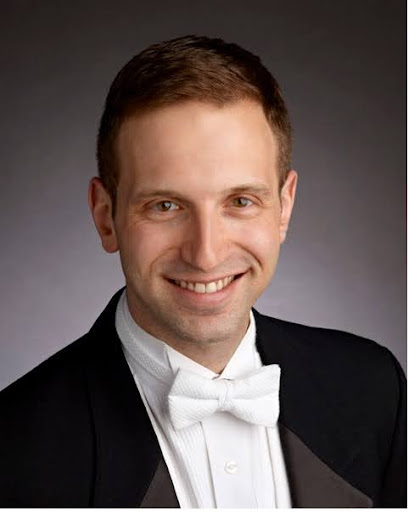by Mike Telin

On Sunday, February 18 at 7:00 pm at Severance Music Center, the Chorus will join forces with the Cleveland Orchestra Youth Orchestra for a performance of Fauré’s beloved work. The program, under the direction of Daniel Reith, also includes Shostakovich’s Symphony No. 5. Tickets are available online.
“We haven’t done it with the Youth Chorus or at Severance since — I want to say 2014. So it’s wonderful that the piece is getting heard again.” Singer said that the Requiem is also a great piece for a young chorus to take on, particularly one that is in rebuilding mode.
“We’re currently at 65, which is double what we had last year coming out of the pandemic. And over half of the singers are new, which is very exciting because this will be their first choral or orchestral performance ever. And it’ll be great to excite these young people about a piece of choral repertoire that perhaps they’ve never heard before, that they can fall in love with and make it their own. And they can look back after the experience and say, ‘Okay, we did that — what’s next?’”
Singer noted that the Requiem’s soprano lines were originally written for young boys or children, which makes it accessible for younger voices. “The harmonies have all the complex twists and turns that we expect from Fauré. And the sequences are very organic — they go where the text wants them to go, so it all just works in a really beautiful way.”
Regarding the orchestration, Singer said that Fauré is taking a cue from Brahms’ German Requiem. Both works omit violins in the first movement. “Most of the work has divided violas and cellos, and the violins are popped in here and there. That gives the chorus a lot of room — they’re not competing with that highest treble sound in the strings.”
Still, the piece is not without its challenges — like the sections where the chorus is divided into six parts. “The sopranos are unison throughout, so it’s the altos, tenors, and basses that do the dividing. So the significant challenge is making sure you’ve got enough folks to cover all of those parts, because they’re all vital to the harmony.”
On Sunday, soprano Sarah Fleiss and baritone Evan Gray, both from the Curtis Institute of Music, will be the featured soloists. “Last year when we performed the Schubert Mass we reached out to Curtis — they have a program where they place some of their advanced students in a sort of management agency — and they made some suggestions.”
Singer said that in addition to being accomplished singers, the two are also great role models. And while COYO has the opportunity to work with Cleveland Orchestra mentors, for the most part the Youth Chorus only works with the directors. “We’ve got a wonderful team of directors, but it’s great for our singers to see young soloists, who are maybe only a decade older. And we can say, ‘If you follow this route, in ten years perhaps you could be one of these soloists.’”
Asked if he has a favorite part of the Requiem, Singer said that was an impossible question to answer, but he quickly began sharing his thoughts. The first being Fauré’s choice of text. “He uses the traditional Catholic Requiem Mass, but omits most of the fire and brimstone — he omits the Dies Irae entirely. And he includes the Pie Jesu and In Paradisum. Both are beautiful and the poetry is very optimistic.”
From a compositional standpoint, Singer said that Fauré is always highlighting the text. “In the Requiem Aeternam, we’re asking for eternal rest for the departed. He also keeps highlighting the perpetual light in the Lux aeterna, but he highlights these things so beautifully that you realize those are Fauré’s requests. Those are the things he is hopeful for — eternal rest, perpetual life, ease from suffering. All of these things would make any world-weary soul say, ah, finally, thank you.”
Musically speaking, Singer pointed out that to our 21st-century ears, Fauré’s music sounds straightforward and very tonal. “During his time he was regarded as — I don’t want to say avant-garde, but he was the bridge that got us to Debussy and Ravel. And the fact that Fauré also met Liszt and taught Nadia Boulanger, who taught Copland, makes his historical significance just so exciting.”
Singer noted that COYC is unique — “there aren’t many programs in this country that prepare young singers to perform choral-orchestral works,” he said. “So I feel that we have something special here in Cleveland. And to think that they’re in high school — actually, a number of them are in middle school — it’s really astounding what they can do.”
Winding down our conversation I congratulated Singer on his appointment as director of the Mendelssohn Choir of Pittsburgh. “Thank you, it’s a lot of fun. And in this day and age for a choral conductor to be only doing that really gives me the opportunity to focus and do my best and make sure that I’m serving all of the choruses that I work for to the best of my ability. So I feel very fortunate right now.”
Published on ClevelandClassical.com February 14, 2024.
Click here for a printable copy of this article



